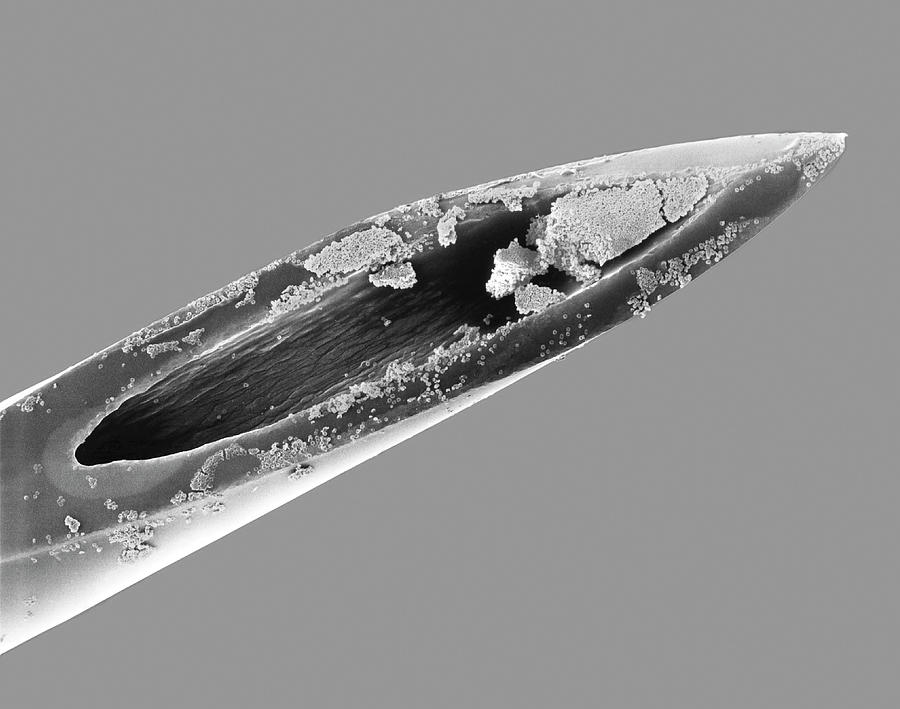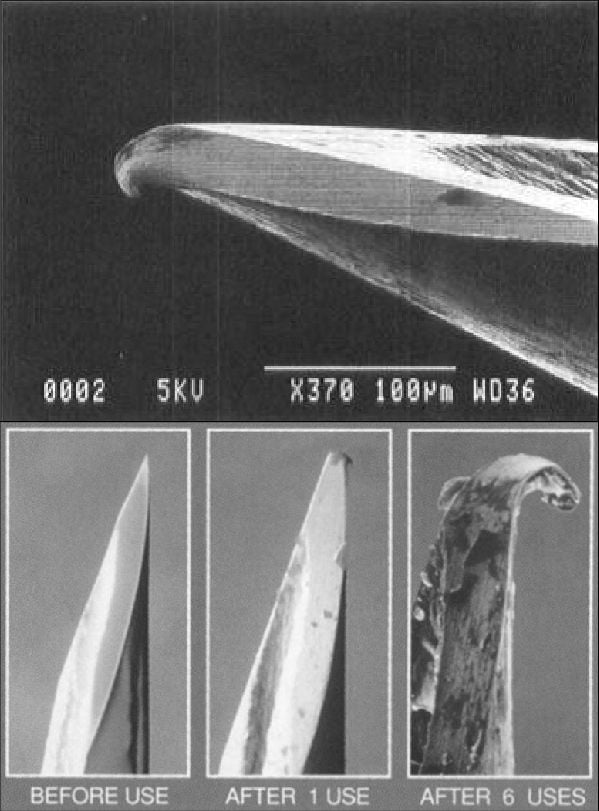The colors are added in, of course, with it being an electron microscope image. Another picture:

Its crazy how crude all of our tools look at this magnification.
It actually looks a LOT smoother and sharper than I expected. Look at microscope photos of razors and knives and they look like chewed up chisels.
I believe it’s damaged by piercing the skin, it’s pristine before.
See that little hook at the point? This is from penetrating skin ONCE.
This is why you don’t re-use needles folks!

Holy shit. I noticed that too and thought that must be one of the ones that hurts going in, figured it was from when they draw the medicine into the syringe,. Or may e even from taking the cap off.
In that last one, you’d probably be able to see the bent over tip with the naked eye. You’d certainly be able to feel it if you ran your finger over it. It would take some force and would be pretty painful to use.
This is fascinating. I mean we all know the theory, but to actually see the cells under magnification puts you in range, and makes you wonder what else there is to know. And the answer is always MORE.
Education should work more practical application in with the theory. I’m looking at you, calculus!
Seriously. I’m in my 40s and this is the first time I’ve ever had any sense of scale for red blood cells. Very cool!
But it’s hard to perceive the scale of the needle tip itself, so there’s no good reference object for the scale. They should have included banana or something for the comparison.
I mean, calculus is a thorny issue in that it is mostly necessary for engineering, but is not usef for humanities. Not teach it, and STEM people will have jump of levels going college. Teach it, and humanities people will inevitably complain.
Personally, I think it is good to teach calculus just for the technical communication aspect.

I wonder what gauge needle that is?
At very rough estimate, I would guess a 30 gauge needle. They have an outer diameter of .31 mm. A blood cell is about 7 micrometer across. It looks like you can fit more a smidge fewer than 50 cells across the thickest part of this needle. Cheers!
I want to eat a red blood cell. Like one the size of my hand that tastes like a gummy bear
Can’t you just eat some real gummy bears? I think they even make big ones.
Frighteningly big.

Please do not buy your child a gummy bear bigger than their head. We have enough problems with diabetes as it is.
deleted by creator
As a type 1 diabetic I really hate this
Yes, some manufacturers of needles have less stringent QA than others. Moved to a new area and the local NHS disallow my usual brand due to cost… Will get to try something else… Hopefully not too bad…








